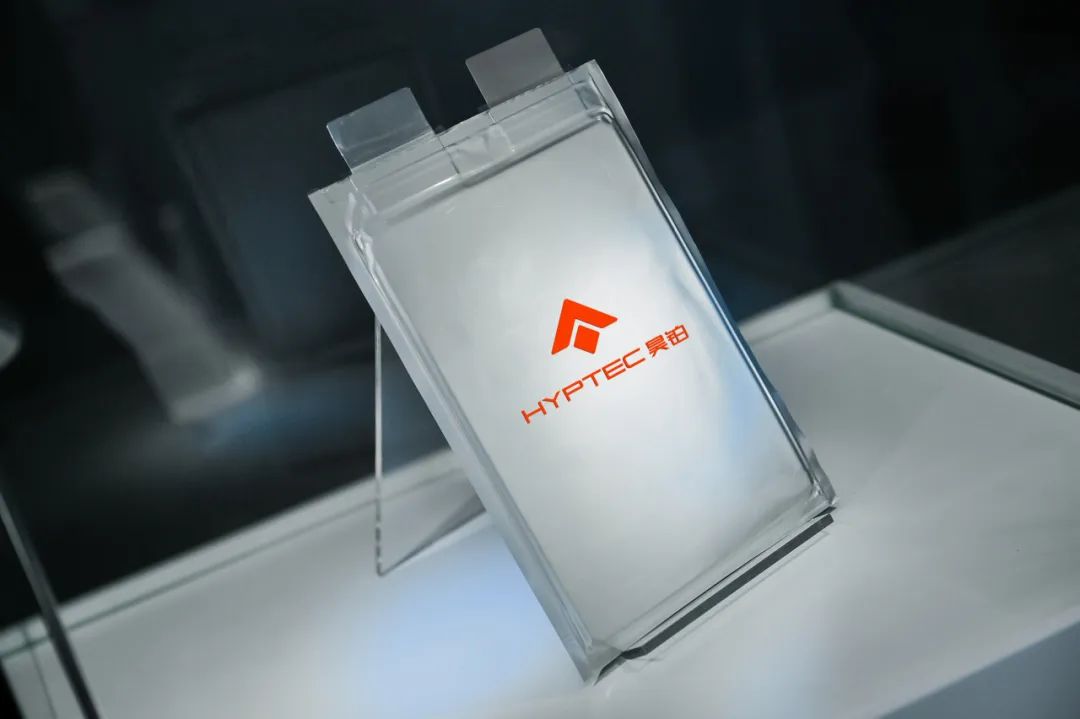On August 30, GAC Group released its 2024 semi-annual report. During the reporting period, GAC Group produced and sold 860,000 vehicles. The total revenue reached approximately 181.14 billion yuan. The total profit and tax amounted to about 15.27 billion yuan. The consolidated gross profit increased by 5.5% year-on-year, with a gross margin rise of 1.38 percentage points compared to last year. The auto export volume surged by about 190% year-on-year in the first half of the year. GAC Group plans to distribute a mid-term dividend of 0.3 yuan (0$) for every 10 shares, totaling about 310 million yuan. In the first half of this year, GAC Group actively advanced its A+H share repurchase plan. By the end of August, the cumulative repurchase amount exceeded 300 million yuan. “In the first half of 2024, facing unprecedented challenges, the group focused on enhancing market competitiveness. We made positive progress in technological innovation, transformation, international expansion, and institutional reform,” GAC Group stated. The auto industry is at a critical juncture of transitioning to smart electric vehicles. Market competition intensifies. GAC Group is also in a period of adjustment and transformation, facing pressures to stabilize growth and restructure. In the second half of the year, the group will work hard to reverse the operational situation. Multiple energy technology routes coexist. The product layout diversifies. The domestic gasoline and electric vehicle sectors are entering a decisive moment. Data from the Passenger Car Association shows that in July this year, the monthly retail sales of new energy passenger cars surpassed those of gasoline passenger cars for the first time. This also marks the first monthly penetration rate of new energy vehicles exceeding 50%, reflecting consumer recognition of electric vehicles in terms of usage costs and intelligence. In fact, starting in 2023, the balance of the oil-electric battle further tilts toward electric vehicles. Even with the complete withdrawal of new energy purchase subsidies at the end of 2022, policies like green license plates and purchase tax advantages continue to support the sector. As the new energy vehicle industry matures, core component prices drop significantly. New energy vehicles, especially plug-in hybrids, gain a cost advantage over fuel vehicles. Policy support and a mature supply chain drive rapid growth for new energy vehicles, while fuel vehicles become a weaker segment. However, McKinsey’s “2024 China Automotive Consumer Insights Report” shows a decline in Chinese consumer acceptance of new energy vehicles. The proportion of respondents considering a new energy vehicle for their next purchase dropped by 6 percentage points. Another global survey reveals nearly 30% of electric vehicle owners consider switching back to fuel vehicles. Both reports highlight consumer dissatisfaction due to insufficient public charging infrastructure. Industry experts believe fuel vehicles still have significant growth potential. The fuel vehicle market cannot be abandoned quickly. Fuel vehicles hold over 80% of the global market share. Both domestic and overseas markets need to establish advantages for fuel vehicles. They should receive the same subsidies and tax support as new energy vehicles to ensure stable development expectations. Adopting multiple energy technology routes and diversifying product offerings can offer solutions. This approach helps avoid issues related to high penetration rates of new energy vehicles and allows timely responses to changing consumer demands. It also provides technical support for market expansion worldwide. GAC Group has focused on multi-energy technology since 2013. With strong corporate foundations and forward-looking technological reserves, it adapts flexibly to the changing landscape. The technology now fully covers EV, PHEV, HEV, REV, and FCV. We developed the world’s first passenger car ammonia engine. It achieves a thermal efficiency breakthrough of over 46% for multi-cylinder engines. The all-solid-state power battery has an energy density exceeding 400Wh/kg. It will enter mass production in 2026.
GAC displays its all-solid-state battery model. Data shows GAC Group sold 24 new energy and energy-saving vehicle models in the first half of this year. These models make up 48% of their offerings. Sales rose to 40.63%. GAC Aion sold 166,000 units, ranking in the top three of the mainstream pure electric market. GAC Trumpchi sold 189,000 units, with PHEV sales around 24,000 units, a nearly 440% increase year-on-year. The proportion of new energy models in joint ventures is also rising. GAC Toyota sold 158,000 new energy and energy-saving vehicles, accounting for 44% of their sales. HEV sales lead the domestic market. GAC Honda’s e:HEV models have sold over 500,000 units. In response to the rapid growth of PHEVs compared to pure electric vehicles, GAC Group plans to launch new PHEV and REV models by 2025. This marks a significant expansion for domestic brands in plug-in products. GAC Group General Manager Feng Xingya states that the automotive industry will enter a new phase of diversified coexistence. The diversity of energy structures across countries means that the transition in automotive power will be a gradual, long-term process. No important technology direction should be overlooked. Whether focusing on EVs, PHEVs, or REV innovations, or leveraging the unique advantages of hydrogen fuel cells, each route has its strengths and different application scenarios. He suggests that brands compete on the same stage, meeting diverse user needs with differentiated value, thus creating broader development opportunities for enterprises. High-level intelligent driving enters mass production, igniting the second half of smart technology. The domestic auto market faces oversupply. Price wars intensify. As electric technology advances, new energy vehicles struggle with hardware homogeneity. Last year’s 800V architecture, once limited to a few high-end models, now spreads widely. Smart technology becomes a key differentiator for car manufacturers and a way to enhance brand value. A report from Founder Securities shows that in 2023, the penetration rate of high-level autonomous driving in China is only 2.7%. It expects this rate to reach 8.9% in 2024 and 14.1% in 2025. The autonomous driving industry stands on the brink of a turning point. Currently, high-level intelligent driving has opened the curtain on the second half of smart technology. From city battles to driving wherever there is a road, from BEV+transformer to end-to-end large models, no automaker wants to fall behind in securing the next competitive edge in intelligent driving. While manufacturers know that full implementation of advanced autonomous capabilities takes time, capturing user minds is crucial. GAC Group is actively advancing high-end intelligent driving. It has developed and applied technologies from L2 to L4. The company focuses on two routes: “multi-sensor fusion” and “pure vision without maps.” The L2++ urban NDA function has been integrated into the Haobai GT, Haobai HT, and the second-generation AION V. GAC plans to launch urban NDA nationwide this year. The pure vision autonomous driving system will debut in April 2024, with mass production expected by 2026. In June, GAC became one of the first companies in China to receive approval for L3 autonomous driving trials. This success stems from its early layout advantage, strong R&D capabilities, and a comprehensive industrial ecosystem.
GAC became one of the first companies in China to receive approval for L3 autonomous driving pilot projects. In April, GAC Group launched the “Smart Travel 2027” action plan. This plan aims to optimize technology and experience in smart driving, smart cockpit, and vehicle-cloud integration over three years. GAC will base its efforts on its self-developed GAC AI model platform, GAC Xingling electronic architecture, and GAC connected big data platform. This initiative aims to enhance GAC’s product experience and travel scenarios. Rapid iteration and change drive the smart electric vehicle industry. Leading companies must invest in technology research and development to maintain control over technology and industry discourse. So far, GAC Group has invested over 50 billion yuan in R&D, with more than 19,000 patent applications, over 42.1% of which are invention patents. GAC Group also seeks external cooperation. It partners with Huawei, Tencent, Didi, iFlytek, and NVIDIA to accelerate its smart strategy. GAC’s Trumpchi brand will launch three models equipped with Huawei’s ADS 3.0 and the new Harmony cockpit. These models include an MPV, SUV, and sedan, slated for release next year. GAC speeds up its international expansion. Chinese automakers leverage technological innovation and cost advantages to capture global market share. However, geopolitical fluctuations, regulatory changes, and consumer demands complicate overseas ventures. Adapting to new international competition is crucial. While GAC Group boosts vehicle exports, it also promotes local production and industry ecosystem development abroad. This dual approach enhances GAC’s competitiveness overseas. In the first half of this year, GAC Group exported 68,000 vehicles, a year-on-year increase of about 190%. It expanded into 26 new markets, covering a total of 68 countries and regions, with a global sales network of 323 outlets.
GAC Aion exports vehicles to Thailand. This year, GAC built factories in Malaysia and Thailand. The Thailand smart factory will initially produce 50,000 vehicles per year. It aims to become GAC’s main production base in Southeast Asia. GAC has established four assembly plants overseas. The company is exploring production base feasibility in Europe, South America, and Africa. In the ecosystem aspect, GAC is building a 15-kilometer charging network in Greater Bangkok. It has completed seven fast-charging stations. The company also launched a seat parts project in Thailand. Logistics subsidiaries in Thailand and Mexico have begun operations. In the second half of the year, GAC will accelerate the development and mass production of six products. The company aims to expand its multi-energy product structure and add over 100 sales points. It targets annual sales of over 150,000 vehicles. “Our international plan is to go out, go in, and rise up. GAC is currently in the ‘go in’ phase. We must speed up factory construction and parts development overseas. We aim to lead in the ‘rise up’ phase and become a global brand,” said Feng Xingya. In the long-term competition of the smart electric vehicle industry, companies must test their technology accumulation and iteration speed. They also need insight into products and markets and deep industry thinking. Only those who face cycles and build stronger systems can weather industry storms. GAC understands this well. It leverages its advantages in product, brand, technology, and ecosystem to drive profound industry change, aiming for broader development opportunities.


